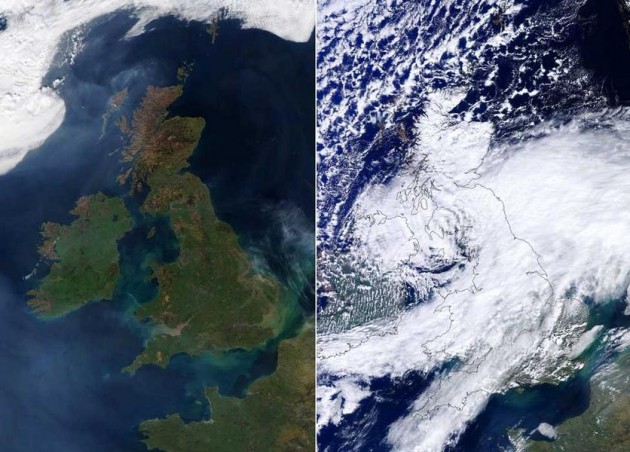The Warming Earth - Climate Prediction is not Weather Forecasting
The chaotic nature of weather makes it unpredictable beyond a few days.
To predict the weather you need to know exactly what is happening in the atmosphere down to the smallest scale.


Climate is the average weather pattern of a region over many years (usually a period of 30 years).
Weather forecasts depend on knowing exactly what is going on in the atmosphere, down to the smallest scales.
Climate forecasts look for patterns over a longer time.
Climate forecasts look for patterns over a longer time.
Will it be generally wetter in winter?
Will there be more heavy downpours?
A paper published in the journal Science in August 1981 made several projections regarding future climate change.
As it turns out, the authors’ projections have proven to be rather accurate — and their future is now our present.
"Potential effects on climate in the 21st century include the creation of drought-prone regions in North America and central Asia as part of a shifting of climate zones, erosion of the West Antarctic ice sheet with a consequent worldwide rise in sea level, and opening of the fabled Northwest Passage.”
Their predictions have turned out to be correct.
"Drought-prone regions" are receiving less rainfall.
The Antarctic ice has begun to crack and crumble.
Some ships are using the Northwest Passage as a polar short-cut.
As it turns out, the authors’ projections have proven to be rather accurate — and their future is now our present.
"Potential effects on climate in the 21st century include the creation of drought-prone regions in North America and central Asia as part of a shifting of climate zones, erosion of the West Antarctic ice sheet with a consequent worldwide rise in sea level, and opening of the fabled Northwest Passage.”
Their predictions have turned out to be correct.
"Drought-prone regions" are receiving less rainfall.
The Antarctic ice has begun to crack and crumble.
Some ships are using the Northwest Passage as a polar short-cut.
Projecting changes in climate due to changes in atmospheric composition or other factors is easier than predicting the weather.


It is impossible to predict the age at which any particular man will die, but we can say with high confidence what the average age of death for men is.
Similarly, a climate prediction might say that average summer rainfall over London is predicted to be 50% less by the 2080s.
It will not predict that it will be raining in London on the morning of 23rd August 2089.
Another way to predict the outcomes of climate change is to examine the geological record of ancient events.

Sea level rose by up to 20 metres in places.
In the middle Pliocene, the concentration of carbon dioxide in the air ranged from about 380 to 450 parts per million.
Another way to predict the outcomes of climate change is to examine the geological record of ancient events.
Atmospheric CO2 is now around 400 parts per million (ppm).
It last reached similar levels during the Pliocene, 5.3-2.6 million years ago.

Global average temperatures were 2-3°C warmer than today.
Sea level rose by up to 20 metres in places.
In the middle Pliocene, the concentration of carbon dioxide in the air ranged from about 380 to 450 parts per million.
During this period, the area around the North Pole was much warmer and wetter than it is now.
Summer temperatures in the Arctic were around 15 degrees C, which is about 8 degrees C warmer than they are now.
There were no humans then, and no farming.
There were no humans then, and no farming.